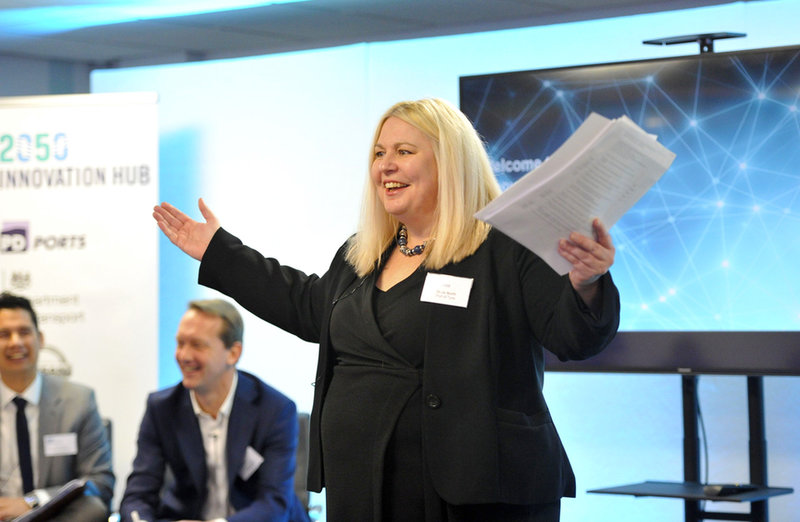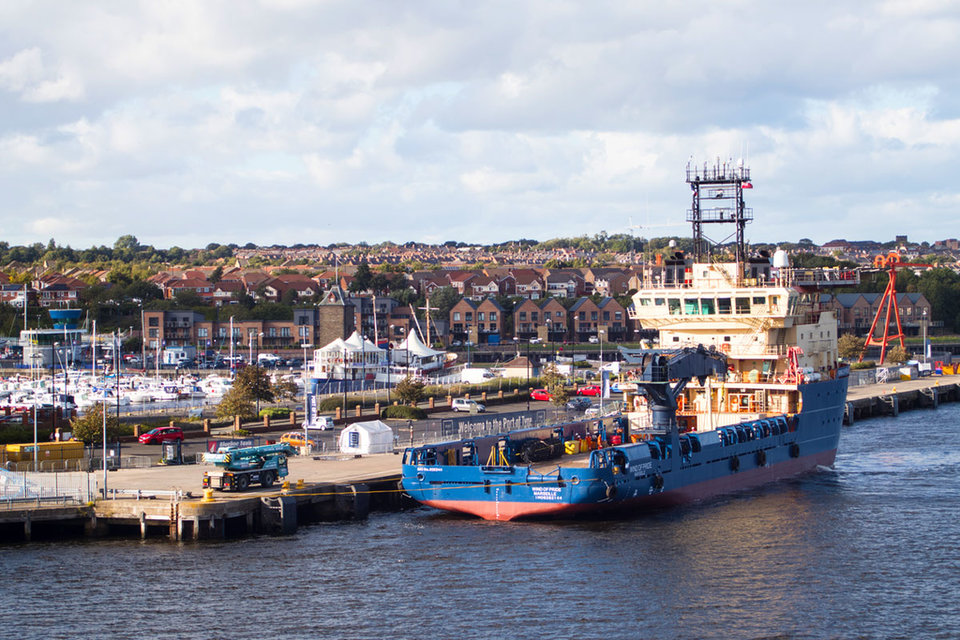Innovation
Could adopting concurrent design methods improve maritime product innovation?
Port of Tyne technology and transformation director Dr Jo North explains the principles behind concurrent design and why the port has begun exploring its use in the maritime sphere.
Image:
The whole maritime
sector is becoming increasingly involved with innovation, as e-commerce continues to grow and alternatives to road or air transportation are highly sought after. Ports are diversifying rapidly and offering a wide range of added-value services, ranging from flexible warehousing to renewable energy generation. Depending on future developments, one day we might even see ports playing a role in facilitating space exploration.
Does that sound a bit too far-fetched? Recent events demonstrate that it is clearly not. Elon Musk has successfully launched and landed a next-generation Starship rocket system from a floating spaceport. He wants to build more of these for his Starship rockets travelling between Earth, the Moon and Mars.
SpaceX is currently advertising a job vacancy for two engineers to help design and build an operational offshore rocket launch facility. So if offshore wind farms are the ‘here and now’ for seaports, water-based launch pads will be the future. It is simply a matter of having the right vision and the right product design. But how do you get there?
The complexity involved in designing both the re-useable rocket and its water-based launch pad is pretty mind-blowing and it will require the input of a large number of experts from multiple disciplines. Whether Musk’s team adopts concurrent design (CD) principles when developing its water-based launch pads will be interesting to observe.
CD is a technique that has been used widely with great success in the space industry already. It’s also something that the Port of Tyne is very interested in exploring and we are offering our sites as a testbed for new technology trials.

Dr Jo North is an associate lecturer for business creativity and innovation at the University of York and joined the Port of Tyne as technology and transformation director and 2050 Innovation Hub lead in 2019. Image: Port of Tyne
A form of ‘organised chaos’
CD is a methodology for solving complex design problems where a team of people are required to identify the right solution. Sam Gerene from Rhea Group presented how it works and the results achievable at our recent 2050 Maritime Innovation Hub virtual event. CD offers a way to allow multidisciplinary experts to collaborate efficiently to identify a solution to complex design needs and it significantly reduces the levels of waste associated with a development project.
Normally, when a project team works on a design, they follow a traditional, centralised process. This tends to be sequential, with each person involved addressing each aspect in turn. Working in a linear fashion like this results in a lot of wasted time and effort because there is insufficient communication and collaboration between the different stakeholders. It is impossible to take into consideration every ramification of a design proposal at each stage, mistakes are made and multiple prototypes end up being generated. Plus, the whole process takes far longer than it needs to.
In a CD process, everyone works collectively. It’s a form of ‘organised chaos’, but within a highly structured process, to ensure everyone is addressing the same end objective and shared goal. CD stimulates much greater levels of creativity and by having everyone on the multi-disciplinary team involved, it is possible to include all lifecycle perspectives in the design.
In a CD process, everyone works collectively
Each specialist brings their own expertise to the table and everyone is invited to contribute concurrently to producing a collective design. This collaborative approach brings some very clear benefits, measured in the form of reduced changes required in later phases; reduced risk, time and money invested; and greatly enhanced productivity.
For instance, when a new ship prototype is designed, a range of experts are needed. These are specialists in topics such as propulsion, propeller design, navigation and electronics, and each of their proposals will have an impact on the final design. A small tweak to the engine will require an adjustment to the navigation system and so on. Working concurrently on the design, these modifications are identified immediately before any adaptations begin to be costly – both in terms of time and materials.
By putting people side by side in work sessions, they can respond to each other’s suggestions and ensure that the perfect solution for one domain expert is not too much of a compromise for another. It’s an efficient way to identify the best possible system design, as opposed to the best subsystem design.

A ship moored at the Port of Tyne, UK.
Image:
Speeding up the design process
The principles behind CD are very similar to those on the agile manifesto, but whilst agile and scrum are methodologies for execution, CD relates to the design phase only. CD is also particularly well suited for use with larger design teams of more than ten people, who come together for a fixed time period to agree on a design in the shortest possible time frame.
The results of projects conducted within the space industry show that it is an excellent way to accelerate the design process. Using CD, it is possible to create a viable design around four times faster, for half the cost and reaching a far higher quality endpoint. Projects that would previously have taken 36 months to realise are now completed in under nine months. The costs are halved because it is possible to ‘parallelise’ the work, with everyone collaborating like a giant brain.
Using CD, it is possible to create a viable design around four times faster, for half the cost
Looking at how other industry sectors are applying innovation methodologies and seeking out synergies is a core objective of the 2050 Innovation Hub. Maritime as an industry continues to transform itself and as alternatives for road and air transportation continue to be in demand, we can see there is huge potential for adopting techniques like CD to improve our products and services. CD is a great example of an innovation best practice and it will be interesting to see if Musk and his team at SpaceX actually use this method to design their water-based launch pad.